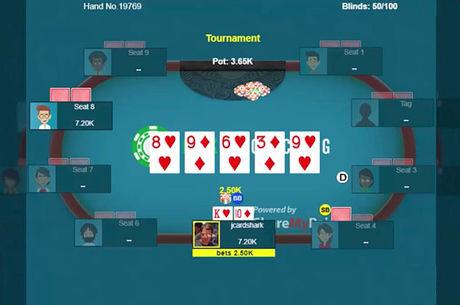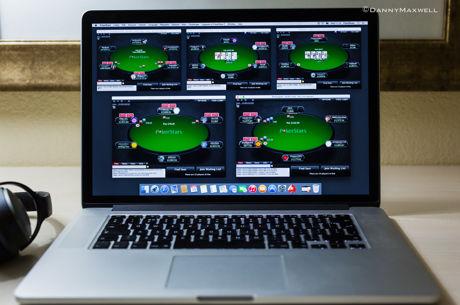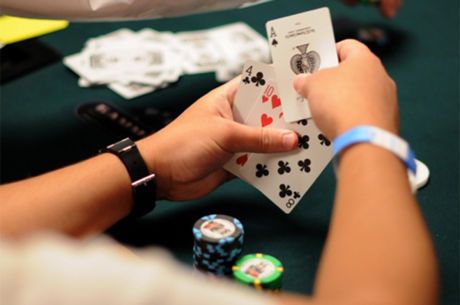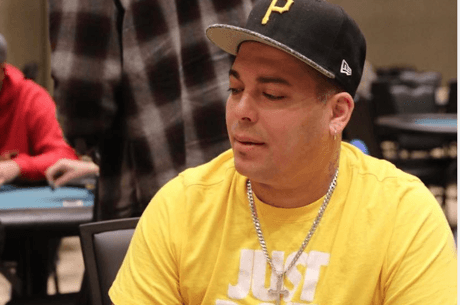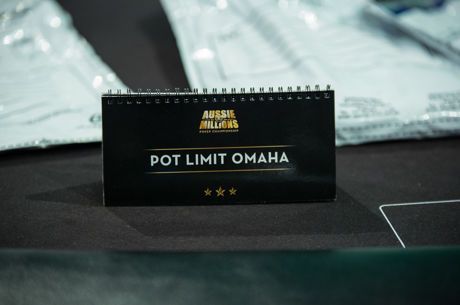Haxton and Galfond Create PLO Problems for Each Other on PokerGO

Following up on the recently completed Poker Masters series of high roller multi-table tournaments, this week PokerGO is again featuring episodes of Poker After Dark with three days' worth of pot-limit Omaha cash games involving a number of notables.
Dubbed "PLOMG" week, the action kicked off last night with five-plus hours' worth of short-handed PLO played by Brandon Adams, Phil Galfond, Isaac Haxton, Ben Lamb, Brian Rast, and (towards the end) Daniel Cates. Tom Dwan is scheduled to be jumping into the line-up tonight.
With blinds of $300/$600 and a minimum buy-in of $100,000, the betting might be limited by the size of the pot, but those pots get pretty big pretty fast with such deep stacks around the table.
For those with PLO experience, the shows provide predictably interesting lines and strategies followed by some of the game's best. PLO newbies can also learn a lot from watching, including some of the basic differences between pot-limit Omaha and no-limit hold'em.
Hand #1: Hand Values Are Different in PLO
The very first hand of the night illustrated one such example of how PLO can play differently from NLH, and how hand values differ between the games both before and after the flop.
Having been dealt a nice starting hand of A?A?K?10? in the cutoff, Haxton opened with a raise and Galfond called from the small blind with Q?9?9?8?.
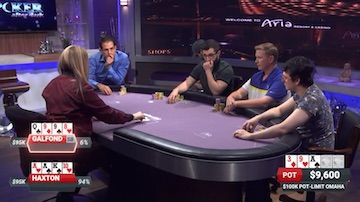
The flop then brought both players sets, coming 3?9?A?, after which Galfond check-calling a half-pot continuation bet from Haxton.
The 7? turn then saw Galfond check-call again, this time a full pot bet of $9,600 from Haxton, putting the pot at $28,800.
"He's beat by only one hand right now," noted commentator Ali Nejad of Galfond's situation as he called the turn. Indeed, Galfond was only currently behind the set of aces Haxton in fact held.
In NLH more money might well have gotten into the middle on this street. Notice, though, how Galfond had no hearts in his hand, meaning the flush draw coming with that turn card made his hand vulnerable if Haxton were drawing.
As it happened, Haxton did have two hearts �� including the ace �� meaning the K? river improved him to the nut flush.
Galfond checked, Haxton went for value with a pot-sized bet, and after a lengthy tank Galfond paid him off.
Given the amount of time Galfond thought about it, he clearly was entertaining folding his set �� now potentially beaten by either a better set of aces or kings, or the backdoor flush. In no-limit hold'em, however, it probably would have been even more difficult to let go of a flopped set, even to a big river bet such as this.
Hand #2: Bluffing Can Happen in PLO
Toward the end of the night came an even better demonstration of the power of drawing hands in PLO, as well as how bluffing can happen in PLO, given the right circumstances.
The action started with Haxton raising to $2,100 from middle position with A?Q?10?3?, then Brandon Adams called from the button with A?A?9?3?. Galfond called as well from the big blind holding A?K?8?2?, making the pot $6,600.
PokerGO highlighted this hand via Twitter last night, picking up the action from there:
PL(G)O(AT) = @PhilGalfond #?#PokerAfterDark https://t.co/QcRmBbJPJP
— PokerGO (@PokerGO)
Flop: 8?4?J?
With a king-high flush draw Galfond checked, then with an ace-high flush draw Haxton bet $2,200.
Adams had an overpair with his aces �� always nice in NLH, but not so special in PLO, particularly when lacking any draws on this relatively wet board. Adams just called the bet, and so did Galfond. Pot $13,200.
Turn: Q?
Galfond and Haxton both picked up gutshot draws to Broadway to go along with their flush draws, while Adams saw no improvement. Galfond checked again, Haxton bet $4,400 this time, and Adams let his hand go.
Note that Adams's hand was technically still ahead among the three, but with all the draws on board, not to mention the possibility of someone having two pair, a set, or a straight already, Adams knew better than to hang onto his aces.
Galfond �� likely noting that second diamond on the board and the A? in his hand �� check-raised pot to $26,400.
The move appeared to represent a made straight (to the queen). It could also have been interpreted as Galfond protecting his straight against those flush draws �� or being bold with his straight because he has a redraw to a flush, too.
Of course, seeing the hole cards, we know Galfond doesn't really have the straight. And we also know Haxton isn't concerned with Galfond drawing to a heart flush, only a diamond flush.
With his own heart nut-flush draw and gutshot Haxton looked at what Galfond had behind �� about $85K �� then called the check-raise, making the pot $66,000.
River: 9?
The river missed Galfond altogether while giving Haxton a queen-high straight.
"Galfond holds the ace of diamonds and could potentially look to represent the nut flush," chimed in Nejad on the commentary.
That's indeed what Galfond did, bombing the river for $46,000.
Much like in the night's first hand, this time Haxton had to decide if Galfond had a hand that beat him �� in this case either a diamond flush or Kx10xXxXx.
Nejad noted Haxton had no diamonds in his hand as well, and thus no blockers to that possible flush.
After calculating for a short while, Haxton exhaled and folded.
As noted, there are two more nights' worth of high-stakes, high-level PLO happening on PokerGO tonight and tomorrow �� worth checking out for anyone interested in learning more about the game and the strategy involved.
Meanwhile, for those wanting to get into the "great game of PLO," check out these articles:


